In December 1974 the Democratic Republic of (North) Vietnam launched a series of large-scale offensives against the Republic of (South) Vietnam. North Vietnamese military strategists had planned for a two-year campaign, but the NVA made such rapid advances against increasingly disorganised and ill-equipped South Vietnamese forces that they were threatening Saigon in less than four months.
At the beginning of April 1975 New Zealand Embassy officials cabled Wellington and reported that the situation in Saigon was deteriorating rapidly. Norman Farrell, the New Zealand Ambassador, recommended the immediate evacuation of non-official New Zealand citizens. The civilian medical team had already been evacuated from Qui Nhon at the end of March.
Over the next two weeks the Singapore-based 41 Squadron RNZAF, which sent a detachment to Saigon's Tan Son Nhut airport, made a series of flights to deliver humanitarian aid and evacuate New Zealand citizens and various South Vietnamese nationals granted ‘unofficial' refugee status. Some of these refugees, dependents of New Zealanders living and working in South Vietnam, were evacuated without the approval of their government. The last of these flights, on 21 April 1975, carried Ambassador Farrell and most of the remaining staff of the New Zealand Embassy.
Saigon fell to the North Vietnamese nine days later, on 30 April 1975. South Vietnam's capitulation came just four hours after the last frenzied evacuation of Americans from the city. The South Vietnamese President, Duong Van Minh, who has been in office for just three days, made the announcement in a radio broadcast to the nation early in the morning. The announcement was followed by the swift arrival of North Vietnamese troops. The first tanks smashed through the gates of the presidential palace within minutes, and decades of war came to an end.
Editorial Team






